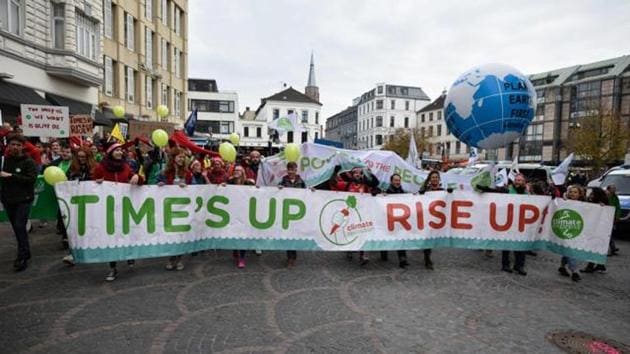What the Paris Agreement means for the climate crisis
India is well-equipped for a new chapter of climate collaboration and competition. The Paris Agreement gives it an opportunity to build on this and create a template for climate change behaviour and action in developing countries
The adoption of the Paris Agreement on December 12, 2015, marked the beginning of a journey towards limiting the global temperature increase to below 2°C. The agreement is different from its predecessor, the Kyoto Protocol, in several ways. The design of the accord nudged nationally-determined voluntary action towards the climate crisis, keeping into account the economic development and historical responsibility of each party. The mechanism also enabled a ratcheting up of these commitments every few years and taking stock of implementation of existing commitments. The first such stock-taking is scheduled for 2023 and every five years thereafter. The Paris accord kick-started a journey of relentless and collective action towards achieving a global common good, accomplished through diverse, locally appropriate, but carbon-emission reducing actions.

Five years hence, the need to achieve these goals and the opportunities to do so have increased. This decade has been the hottest since record-keeping began about 140 years ago. The years between 2015 and 2018 have seen the hottest temperatures recorded till date, with global CO2 emissions increasing by an additional 4%. Further, as highlighted by the United Nations Environment Programme (UNEP) Emissions Gap Reports, the gap between achievement of the 1.5°C target and the current Nationally Determined Contributions (NDC) scenario, has widened to 32 gigatonnes of equivalent carbon dioxide (GTCO2e) in 2019.
This first half-decade of the accord has seen domestic actions in key economies in and around the energy sector, together with multi-sectoral energy efficiency improvements, and the beginning of decarbonisation in the agriculture, transport, and industrial sectors. One of the success stories is India, which, according to the Climate Action Tracker, continues to be the only country among the G20 whose Paris pledges and subsequent actions place it on track to a below 2°C global warming future.
This is largely because of the steep decline of renewable energy tariffs, which declined by 64% just between 2015 and 2019; hitting a historic low of Rs 2/kWh ($0.0270/kWh) in a bid opened on November 23. Solar electricity is now the most inexpensive electricity in India, and its newly-discovered price is less than the cost of coal alone in more than two-thirds of the coal-based electricity generated. A similar achievement happened earlier in the case of LED bulbs, whose prices fell by about 82% between 2014 and 2020. These experiences, focusing on increasing sales volumes by conscious market expansion strategies accompanied by reducing prices due to bulk procurement, have been made possible through a combination of policy levers, institutional innovation, technological support and mobilisation of finance.
Another reason why renewable energy achieved the scale that it currently operates at is that, after the initial policy nudge, deployment and uptake of renewable energy made for an economically strong case. As a next scalable task, the deployment of infrastructure for the wide-scaled uptake of electric vehicles, especially buses and two-wheelers will not only be economically viable but will also reduce local air pollution and the emissions that contribute to the climate crisis. These will improve public health while reducing ecological damage.
From this point onwards, the global community finds itself in a stronger position on at least two accounts. First, the pledges on achieving carbon neutrality by China, Japan and South Korea are positive announcements. The unwillingness of the United States (US) to participate in the global agreement as seen in the last four years is likely to be overturned with the US being officially back on board with the agreement. Second, the pace of advancement and availability of technology will continue to make it possible to undertake economically viable transformations which can further limit global emissions across geographies. This can be achieved as long as best practices and access to best available technologies are made available to influence climate action in vulnerable regions. This can be assisted by developing long-term strategies embedding climate in social, economic and developmental discourse; and strengthening global collaboration and multilateral support in nudging towards climate-friendly pathways. India’s experience with collaborations like the International Solar Alliance (ISA) is a successful case in point. The next phase of the Paris Agreement must further build on this.
The Paris Agreement creates a once-in-a-generation opportunity for India to substantively contribute to development and climate action in developing countries. This can be done through strong partnerships that bring together here-and-now development benefits with longer-term climate benefits, and at prices that are attractive. Capturing this opportunity will depend on the actions we take now. However, the agreement has been able to bring together the vulnerable countries and high-emitting players to tackle a collective problem, and has enabled us to move to the successful first step in the decarbonisation discourse.
Dr Ajay Mathur is the director-general, TERI , Ritu Ahuja is research associate, TERI
The views expressed are personal






